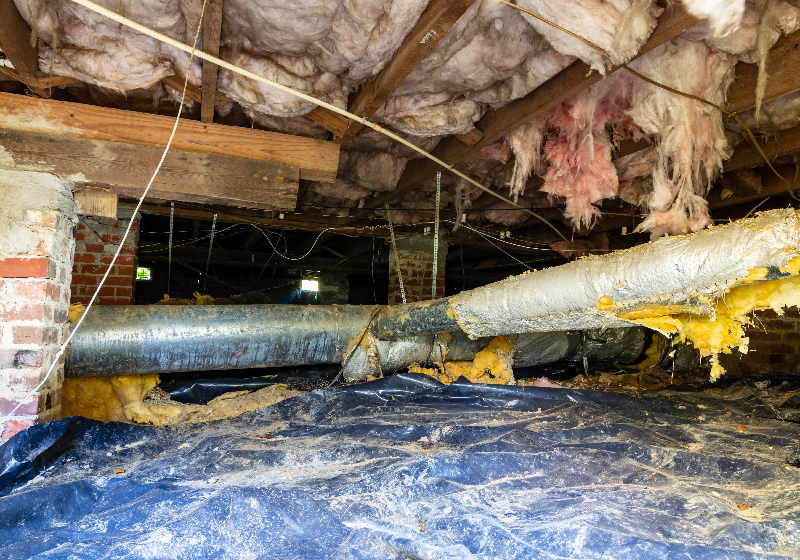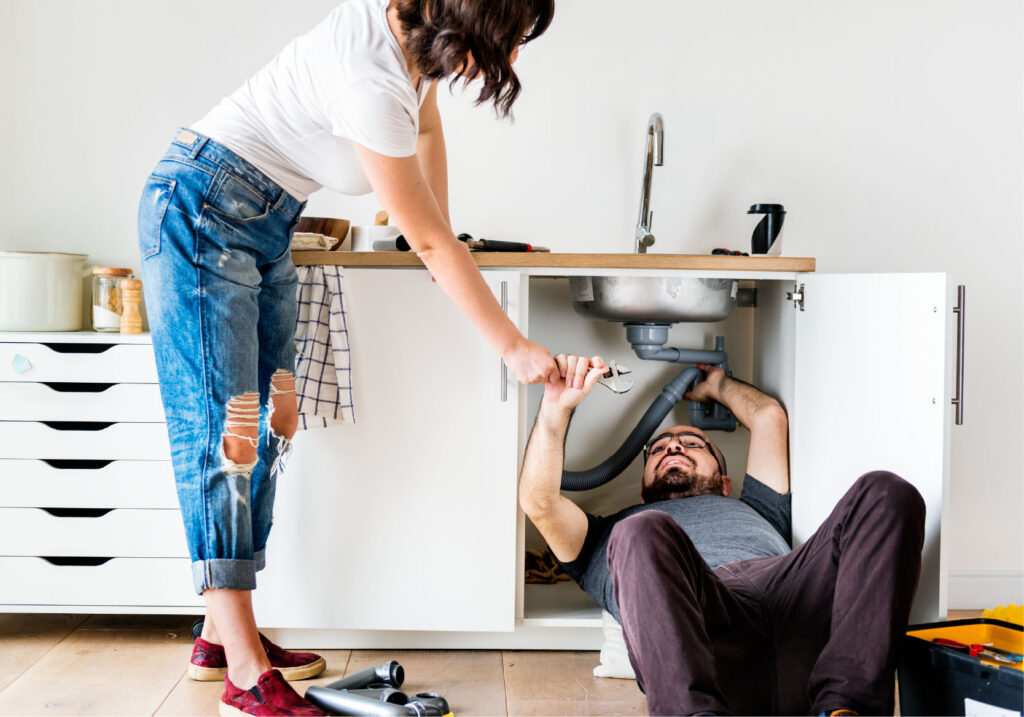If you’ve ever lived in an area that experiences above-average flooding (or just anywhere in the South), odds are you’re very familiar with crawl spaces. A foundation style different from concrete slabs or full basements, crawl spaces are a fairly common feature in homes that allow for easy access to things like plumbing, electrical wiring, and HVAC systems under the home. Their shorter excavation time also makes them a more cost-effective option for new builds.
There are many advantages to buying a home with a crawl space, but with each advantage, there’s also a concern homeowners should be aware of. Let’s discuss a few of the most common — and costly — issues you may encounter in that little space under your floorboards.
1. Moisture, Musty Smells, and Mold
The first issue that homes with crawl spaces face is the unaddressed buildup of moisture beneath the home. So-called crawl spaces earn their names due to a very low clearance height, with a majority of these spaces measuring three feet or lower. It’s understandable that homeowners don’t make it a habit of exploring these areas regularly, but a lack of attention anywhere around the home tends to lead to problems down the road.
Most crawl spaces have open dirt floors, no insulation, and open venting, all prime areas for moisture to collect and develop into mold. Moisture migrating upward from exposed earth can even feed through porous masonry (something also referred to as capillary flow), meaning mold can develop throughout the home due to issues that start in the crawl space. According to the Environmental Protection Agency, overexposure to mold can lead to adverse health conditions such as fever, skin rashes, and asthma aggravation.
If you’ve noticed musty smells around the home or seen a decline in your family’s health, schedule a mold inspection to first identify the problem’s source! This is the start of any effective mold remediation plan.
2. Radon Gas Infiltration
Just like moisture and mold particles can access the home via open vents in the crawl space, radon gas can use these same points to further contaminate indoor air. If you’re unfamiliar, radon is a naturally occurring gas produced from the breakdown of uranium in the ground and has been identified as one of the leading causes of lung cancer today. What makes radon particularly concerning, though, is that it is a radioactive gas with no smell, color, or taste.
Organizations like the American Association of Radon Scientists and Technologists (AARST) provide updated report cards by state so homeowners can track how much of a concern radon is in their region, but radon professionals advise that there is no “safe” level of radon exposure. Rooms on the lower level of homes are more vulnerable to dangerous levels of radon gas, which is one additional reason why houses with crawl spaces might be preferable to homes with full basements (especially homes with full basement bedroom suites).
Regardless of your location, NPI recommends that buyers order a radon test with every home purchase.
3. Pesky Pests
Building on these previous issues, unmonitored moisture and mold conditions in crawl spaces can also become attractive areas for all kinds of pests to gather. Wood-destroying organisms like carpenter ants, termites, and wood-boring beetles work together with mold and fungus to eat away at tasty wood rot in joists, posts, and flooring. On top of these insects, larger pests like rats will also have an easier time eating through wet and previously damaged home structures.
Savvy homeowners have many DIY opportunities to drive away infestations, but addressing the source of home problems should always be the top concern.
4. Poor Indoor Air Quality
We’ve talked about mold and radon, but there are many other contaminants that can accumulate and become trapped within the home when the building envelope is compromised. Mounting issues starting in the crawl space can result in homes with poor indoor air quality, seemingly unexplained sickness, and even long-term health issues.
Indoor air quality improvement can start with ensuring things like carbon monoxide monitors are functioning properly and by scheduling an indoor air quality evaluation by a local professional. However, solutions tend to go back to improving the home’s ventilation. Homes rely on fresh outdoor air to replace old, stagnant indoor air, and this cycling is only achieved through strategic cycling systems.
5. Structural Instability
Finally, a combination of wood rot from excess moisture in crawl spaces and damage from wood-destroying organisms can lead to deteriorating structural conditions in the home. Again, since crawl spaces are (understandably) monitored by homeowners so infrequently, structural issues are often left unidentified until floors start dipping and expensive repairs are necessary.
Wood rot, premature rusting from pipes, and electrical damage from an out-of-control crawl space can certainly be frustrating, but homeowners do have opportunities to get ahead of these issues.
What to Do When Facing Crawl Space Issues?
While it can be an investment depending on the home’s size, crawl space encapsulation has been growing in popularity as a way to better manage moisture beneath the home and deal with many of the common pitfalls of these types of buildings. Starting with a change of mindset, encapsulated crawl spaces can be compared to “short basements,” maybe without going quite as far as making it a fully living area.
After thoroughly cleaning out and draining the crawl space of existing water, encapsulation starts with installing a vapor barrier usually consisting of a thin but extremely durable plastic sheet. From there, encapsulation professionals seal vents, install insulation as needed, and place a dedicated dehumidifier to keep the space dry moving forward. Sump pumps can also be installed during this process if one isn’t already present, and homeowners can even incorporate a radon mitigation system as well.
Encapsulation might be the perfect option for addressing all the major issues inherent in homes with crawl spaces, but a regular annual home inspection from a local certified and licensed professional can also be the perfect start for confirming the need for these systems and others throughout the home. Keep costs down on home repairs by starting with your annual preventive home maintenance routine!
Contact National Property Inspections for more information on how to develop a seasonal maintenance strategy that works for you! Looking for a new home? At NPI, we are passionate about equipping new homebuyers with the best information to make an informed, confident purchase. Call NPI before you buy!



